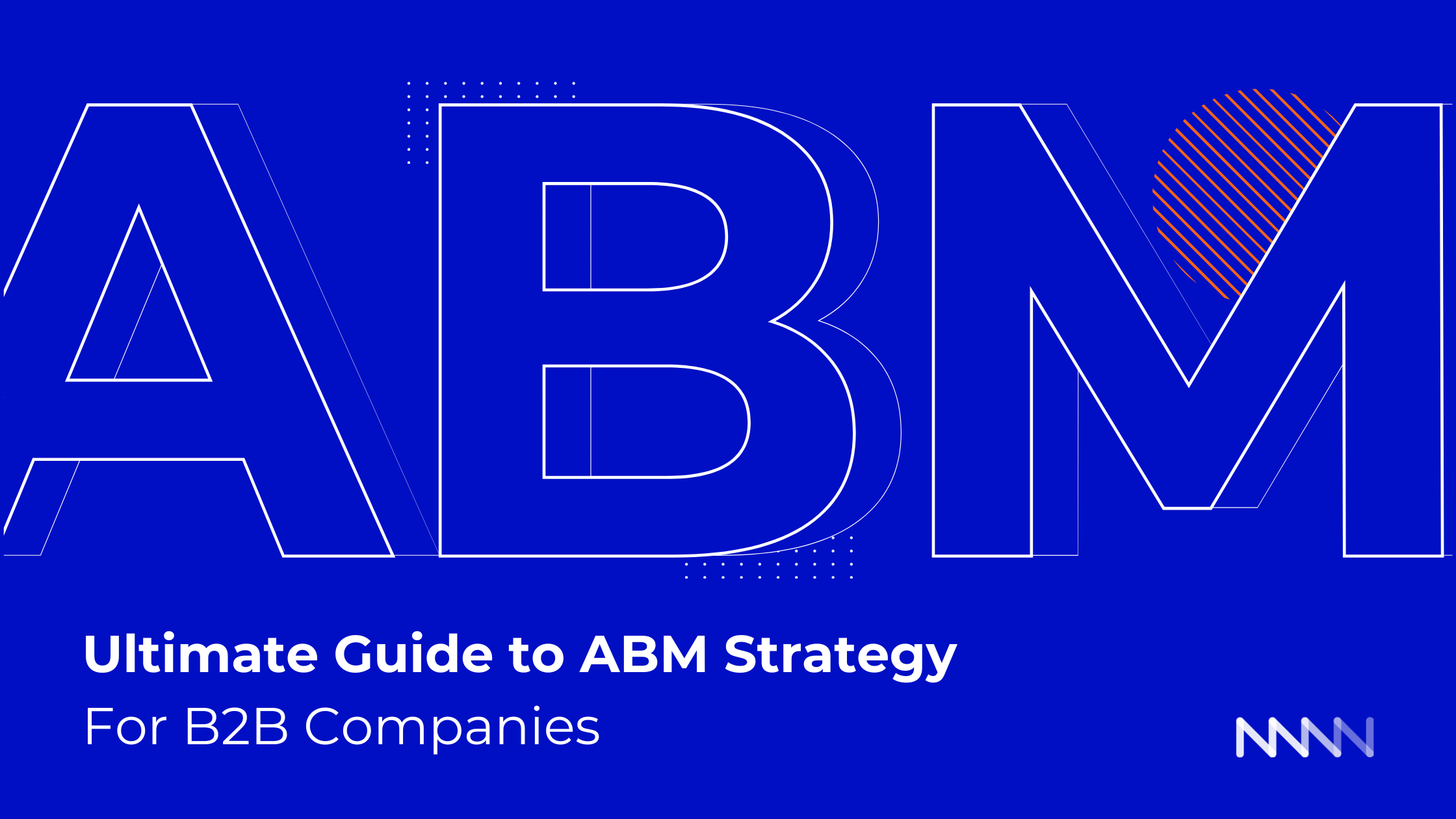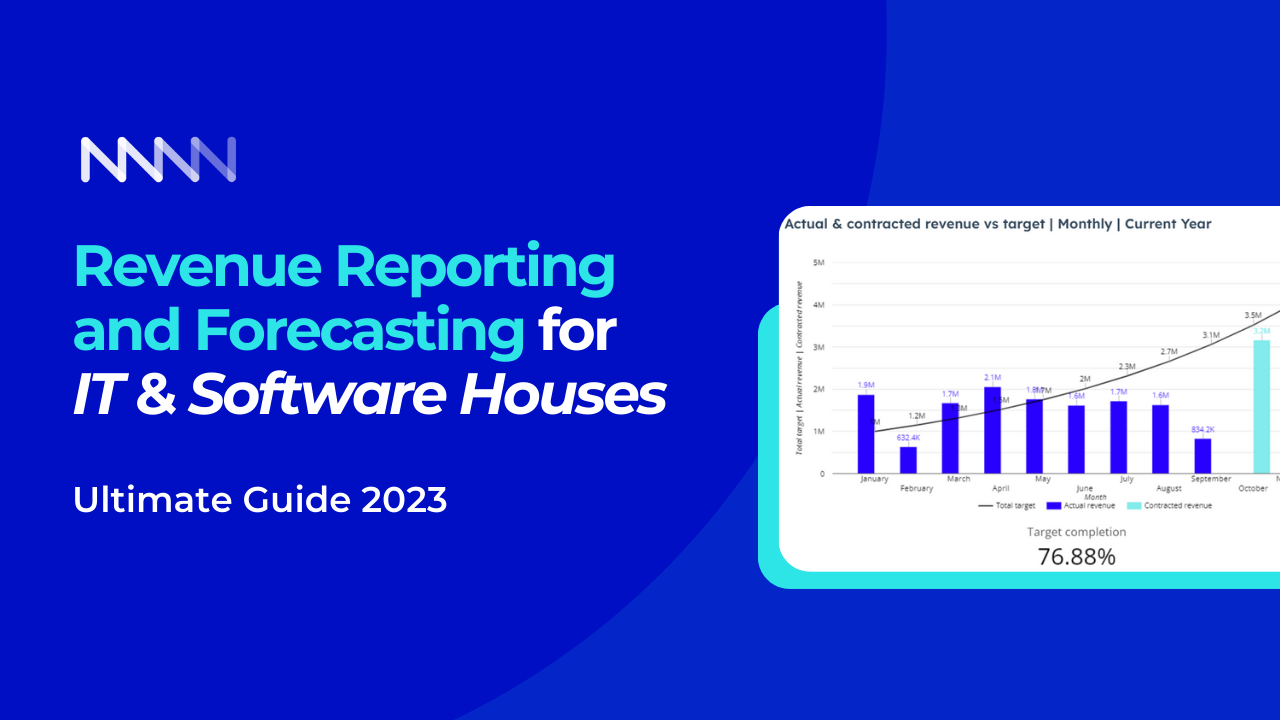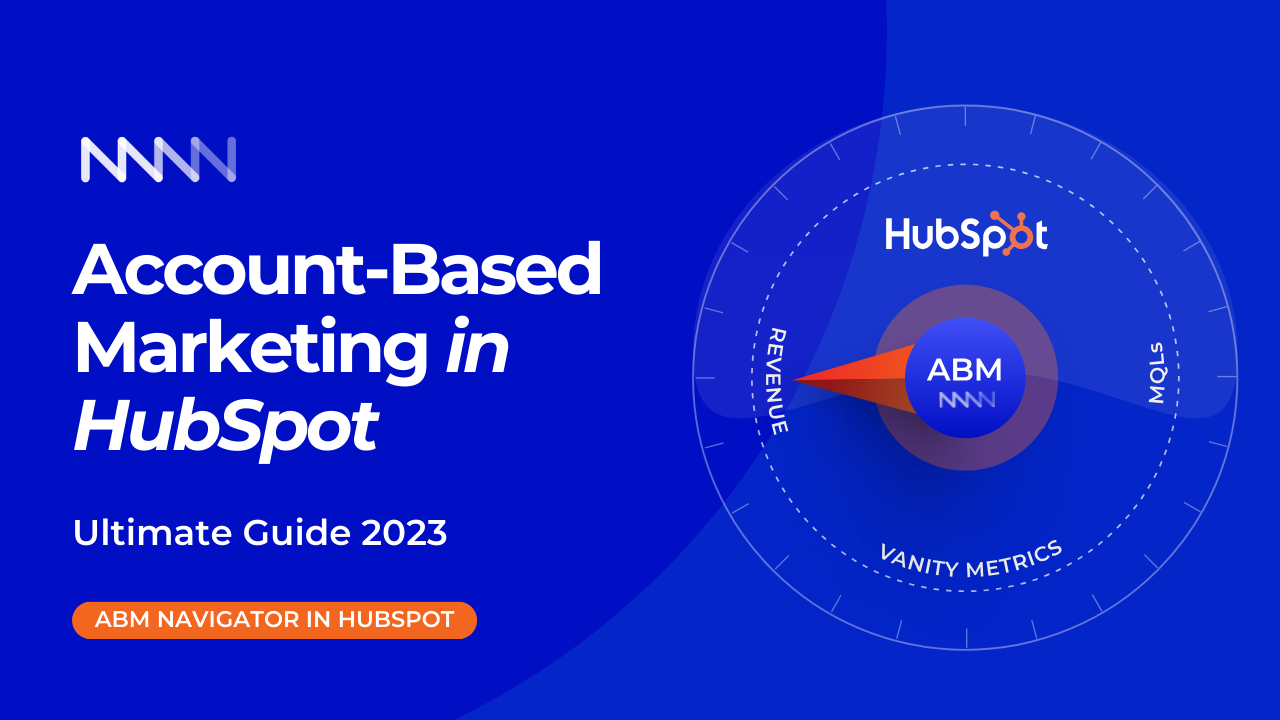15 MIN READ
Related articles
December 14, 2023
November 17, 2023
From this article, you'll learn what Lead Scoring is and how to use it in HubSpot for identifying and prioritizing top-quality leads.
Let's dive into it.
Table of Contents
In most companies, sales reps are buried under an avalanche of leads that never convert.
They waste time contacting them instead of focusing on those who fit the business.
While marketing hits the goal of MQLs volume, sales cannot hit the quota.
Misalignment between two departments only gets bigger.
Despite the opinions of many LinkedIn gurus, it doesn't mean that the MQL model is broken.
It means the marketing team doesn't know how to qualify leads for sales.
And the hidden costs are enormous...
According to SomaMetrics, poor lead data can cost a sales rep 550 hours and $32,000 annually!
With an average sales rep salary of $60,000, this means individuals are spending over 50% of their time and payroll working with leads that will never convert!
What's more, SiriusDecisions discovered that each bad lead can also cost as much as $100 per record.
For instance, the cost of 5,000 bad leads is about $500,000. These expenses accumulate rapidly
How can we fix this?
One solution is, yes, you guessed it, Advanced HubSpot Lead Scoring.
It filters out the noise and lets your sales focus on top-quality leads. While marketing gets feedback on the kind of leads it has to generate.
Sounds promising, but how to achieve that?
Let's dive into how Lead Scoring works and what it looks like in HubSpot.
Lead Scoring is a systematic approach to rank leads based on their perceived value to your business.
Each lead is assigned a score based on specific criteria, such as:
or any other factors that you deem relevant...
The higher the score, the more likely the lead is to buy.
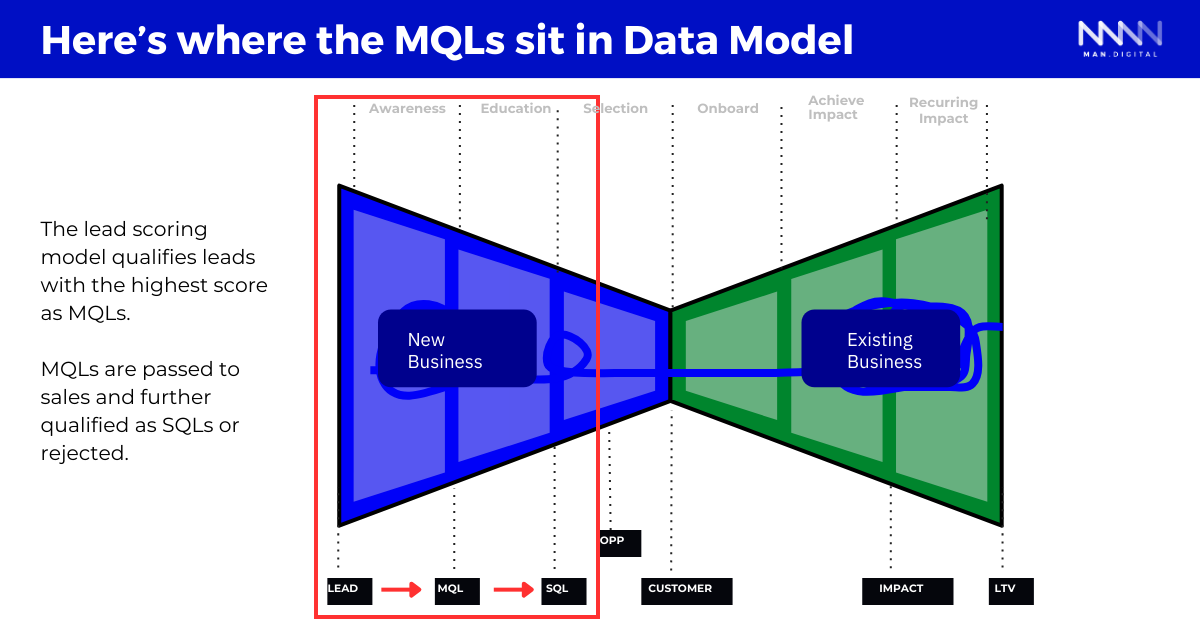
By determining the "hotness" of a lead, your sales team can prioritize efforts on those most likely to convert.
Lead Scoring becomes vital for business when:
While Lead Scoring is a helpful tool for your sales and marketing, it has its pitfalls. Some common mistakes you should avoid working with Lead Scoring include:
Setting arbitrary scores: Assigning scores that don’t truly reflect a lead’s potential due to the lack of clear ICP.
Over-reliance on automation: Relying solely on automated scores and missing the human touch or intuition.
Not integrating with other tools: If lead scoring isn’t integrated with CRM, the sales team loses the context behind why the lead becomes qualified.
In HubSpot, you can create multiple lead-scoring models with the flexibility to qualify different sets of contacts.
Working with customers, as well as in our own CRM, we believe the one based on the Fit & Engagement Score is most effective.
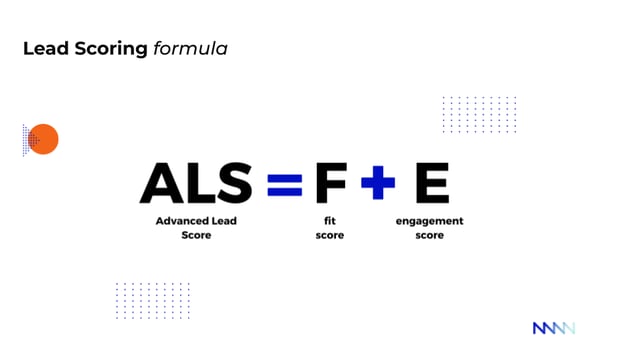
Why?
While all Lead Scoring models assume some level of buying intent, this model most reflects the reality.
Let's break it down to understand how it works.
Fit Score is like a matchmaking service for leads and your sales team.
Consider the characteristics that make a lead perfect - industry, job role, company size, location, tech stack, annual revenue, etc.
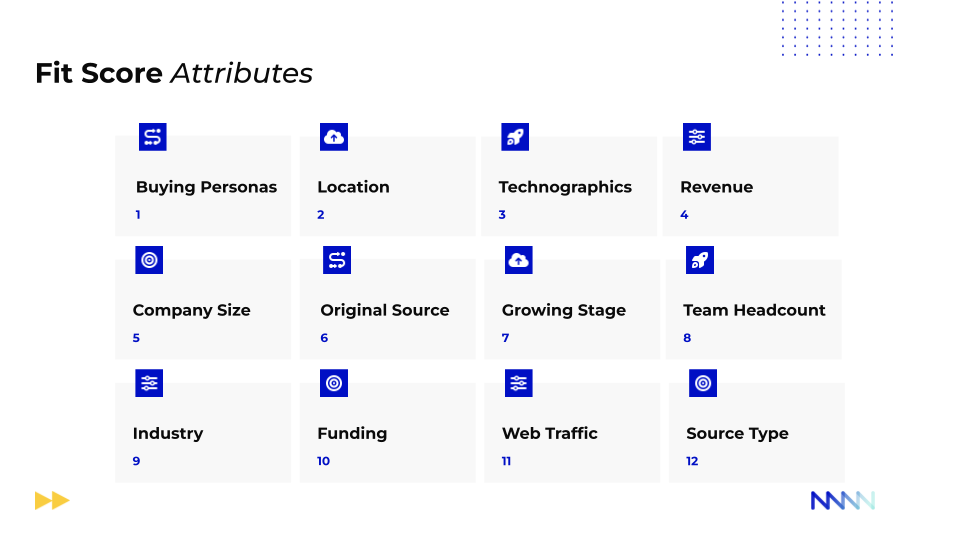 (Example Fit score attributes)
(Example Fit score attributes)
Next, split attributes into tiers based on their importance for ICP, and assign them scores with defined weights.
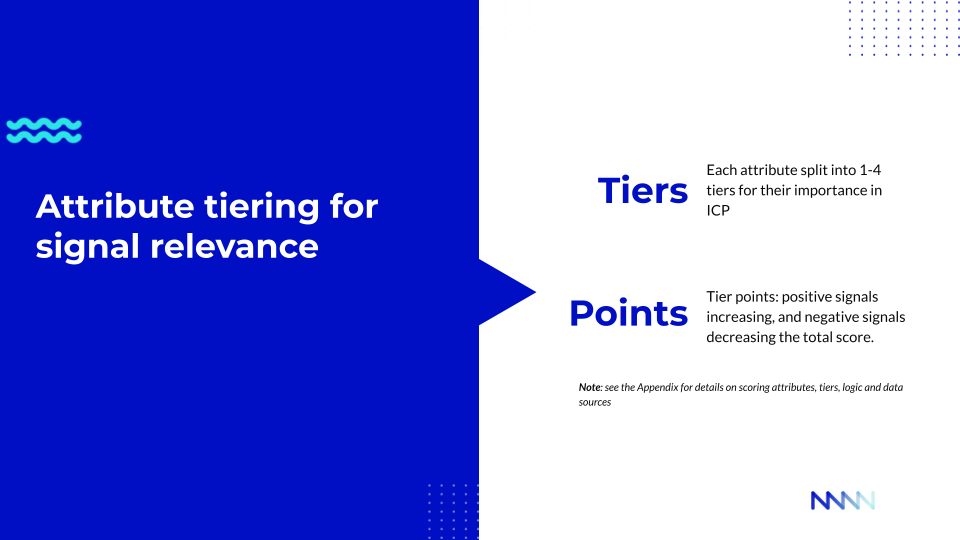
Example tiering for buying persona attribute:
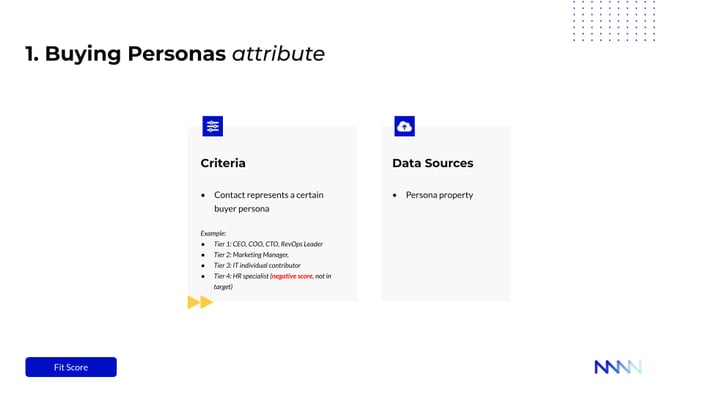
You have to tier all attributes you've chosen for your Fit Score in a similar fashion.
(Example tiering of Fit Score attributes)
The lead then gets a score with a defined weight for each tier's characteristic.
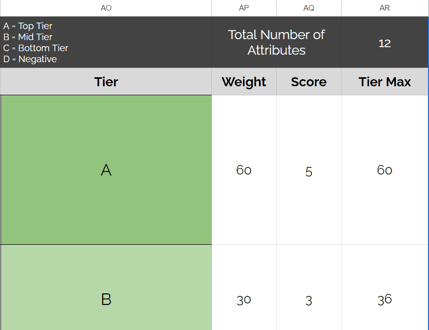
(Example Fit Score weights for Tier A, B)
The higher the score, the higher the fit.
Next, define criteria that make a lead unsuitable (leads will get negative scores).
Let it be a competition, not enough headcount, lack of specific tech stack, etc.
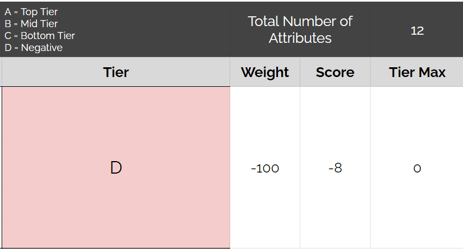
(Example negative weighting)
It's about having a filter that sifts out the gold from the gravel.
Engagement Score measures how much a lead interacts with your brand.
Did they visit your pricing page, open emails, download content, attend webinars, or engage with your social posts?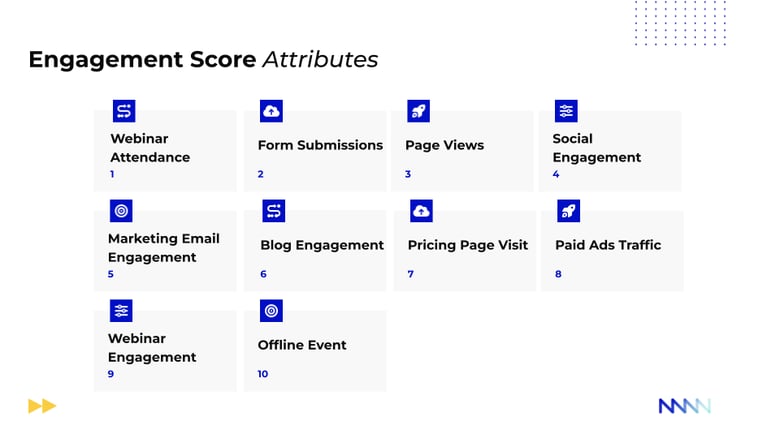
(Example engagement score attributes)
Similar to Fit Score attributes, you have to tier the engagement types and assign them scores with defined weights.
(Example tiering of engagement types)
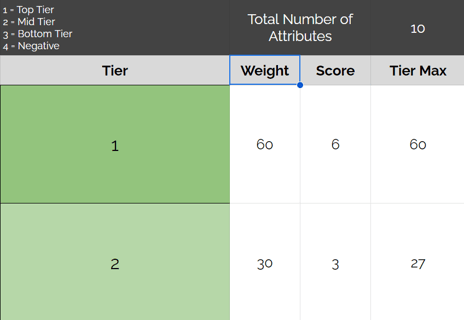
(Example Engagement Score weights for Tier 1, 2)
E.g, a lead that received a Tier 1 engagement score might:
The more the lead engages, the more likely it's ready for a sales outreach.
The real magic happens when the fit score and engagement score join hands.
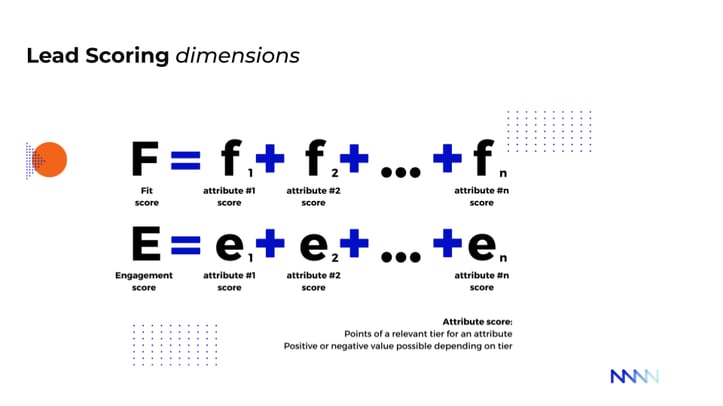
(Lead Scoring dimensions)
Once your leads have assigned scores, you can use the below matrix to categorize them.
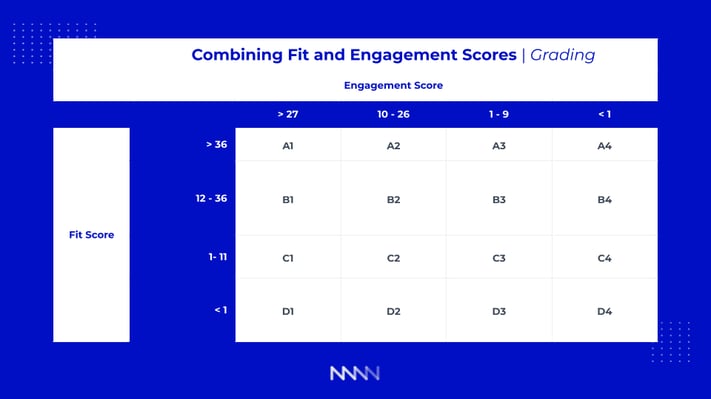 (Fit & Engagement Score Matrix)
(Fit & Engagement Score Matrix)
First, let's take a look at the contact list view in HubSpot without Advanced Lead Scoring.

(Contacts list view without lead scoring)
It's really hard to tell which of these leads should be prioritized by reps, isn't it?
Now, look again, but this time with Advanced Lead Scoring.

(Contacts list view with Advanced Lead Scoring)
Now you see that all those leads ARE NOT READY for sales outreach.
How's that so?
As we mentioned in the previous chapter, A2 leads are a good fit but need more engagement with your brand.
Thus, marketing should still work on them until they are ready to be passed to the sales team.
But wait, there's more...
Using a tool like Supered, you can give your sales immediate context for the sales outreach through record notification.

As a result:
Sales get an MQL with context as to why it was qualified.
Sales know what sequence to use based on the intent triggers.
Sales save time on researching contact and its activity timeline.
The best part? The whole process happens in the background without manual intervention. Your salespeople don't even need to think about it.
Suppose you have a RevOps team in your org. You implement these kinds of improvements regularly.
This is how you get a competitive edge.
Before implementing Advanced Lead Scoring in HubSpot, make sure you have covered foundations.
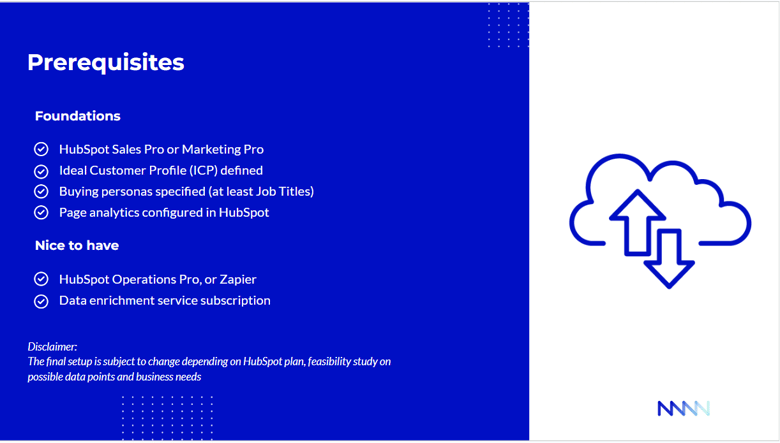
(Prerequisites for Lead Scoring Implementation)
Without them, you'll not be able to make it work.
To set up Advanced Lead Scoring in HubSpot, follow these steps:
Example: Lead Scoring - Fit Score - Buying Personas - Tier 1
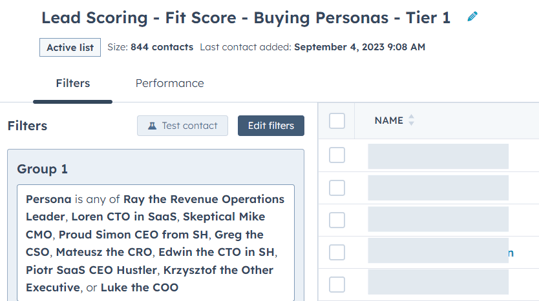
Fit Score,
Engagement Score,
Advanced Lead Score

(Example of the Engagement Score property)
Add criteria with list membership filtering and allocate a relevant number of points for a given attribute and its tier.

(Example of Fit Score)
Note: Exclude contacts who should not be scored, e.g. your vendors. Assign eg. -100 points for the contacts who are members of a "Global Exclusion List".
Here you can see the part of the workflow.
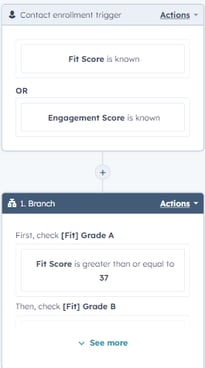
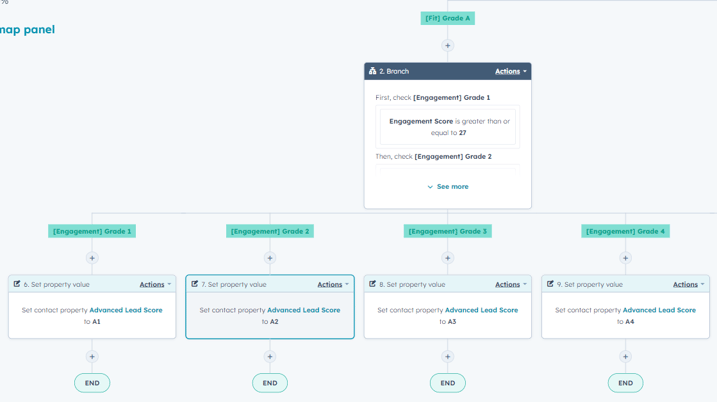
Use automation to manage SLA workflows and notify Revenue Operations of missed pickups.
If sales fail to meet SLA, reassign the lead to another salesperson or send it back to marketing for disqualification.
Introduce negative weighting to deduct points for leads that are unlikely to convert.
Run scenario testing to ensure Lead Scoring points align with predetermined thresholds.
Use Lead Scoring setup and workflows within HubSpot to effectively manage lead handovers.
Lead Scoring is a powerful tool for businesses looking to streamline their sales & marketing process and boost conversions.
However, it requires the right strategy, regular monitoring, and updates to be effective.
And, what's most important, it has to be tailored to your go-to-market strategy, including the ideal customer profile with targeted segments.
Fortunately, HubSpot has made it easier for businesses to implement and benefit from Lead Scoring.
If you want to implement Advanced Lead Scoring in your company, just schedule a call with one of our consultants:

